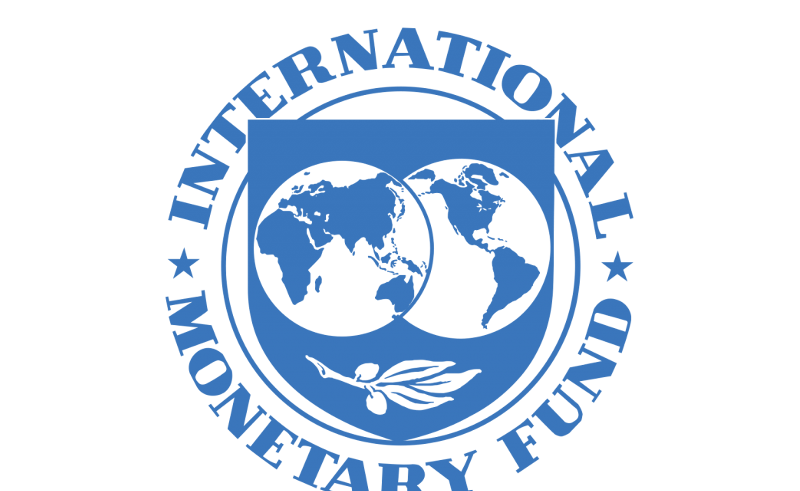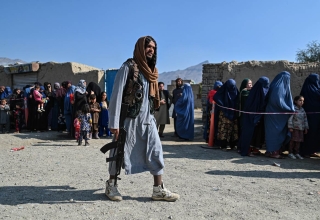
WASHINGTON, DC: The International Monetary Fund (IMF) Executive Board has concluded the Article IV consultation1 with Dominica and endorsed the staff appraisal without a meeting on a lapse-of-time basis.
The Dominican economy is recovering strongly following the pandemic. Real GDP growth is estimated to have reached 6.9 percent in 2021 and 5.7 percent in 2022, driven by construction of climate-resilient infrastructure, a partial rebound in tourism and a substantial rise in agricultural output. High global commodity prices and shipping costs pushed inflation up to an estimated 7.5 percent in 2022, despite mitigating fuel price policies.
The current account deficit remained elevated, at 26 percent of GDP, due to unfavorable terms of trade, large imports of investment goods, and incomplete recovery in tourism receipts. Fiscal space remains tight. High Citizenship-by-Investment (CBI) revenue, nearing a record 30 percent of GDP in recent years, has supported public investment and crisis response measures.
That said, the primary fiscal deficit expanded to 6.2 percent in FY21–22, with public debt reaching at 106 percent of GDP. The financial sector remains stable. Tighter global financing conditions have not impacted bank deposit and lending rates given abundant liquidity and limited exposure of foreign capital markets., Banks have strengthened provisions in line with ECCB requirements and remain well capitalized.
Recapitalization of credit unions is progressing. Meanwhile, credit to the private sector has underperformed relative to GDP growth, while bank exposure to the public sector has grown since the pandemic. The economic outlook is positive, predicated on a continued expansion in tourism and implementation of the country’s economic modernization and resilience building agenda.
The transition to local geothermal energy production and construction of a new airport, planned for the coming years, will sustain economic activity, reduce dependency on fossil fuels, bolster resilience to external shocks, and improve international connectivity. Prudent fiscal management, however, will be of essence to address external and domestic imbalances.
The current account deficit is expected to narrow as tourism 1 Under Article IV of the IMF’s Articles of Agreement, the IMF holds bilateral discussions with members, usually every year. Staff hold separate annual discussions with the regional institutions responsible for common policies for the countries in four currency unions – the Euro-Area, the Eastern Caribbean Currency Union, the Central African Economic and Monetary Union, and the West African Economic and Monetary Union.
For each of the currency unions, staff teams visit the regional institutions responsible for common policies in the currency union, collect economic and financial information, and discuss with officials the currency union’s economic developments and policies. On return to headquarters, the staff prepares a report, which forms the basis of discussion by the IMF Executive Board.
Both staff’s discussions with the regional institutions and the Board discussion of the annual staff report subsequently are considered an integral part of the Article IV consultation with each member.” The Executive Board takes decisions under its lapse-of-time procedure when the Board agrees that a proposal can be considered without convening formal discussions.
Exports expand, commodity prices fall and imports of fuel and investment goods soften, in line with fiscal consolidation. Meanwhile, public debt is set to decline gradually in coming years, supported by efforts to reduce current spending and strengthen tax collection. Building policy buffers and critical infrastructure will help address downside risks stemming from global economic uncertainty, climate change and volatility of CBI revenue.
Executive Board Assessment: The Dominican economy is expanding strongly but faces headwinds. Severely affected by the pandemic, real GDP growth is estimated to have rebounded during 2021–22, driven by construction of climate-resilient infrastructure, a pickup in tourism following the full lifting of mobility restrictions, and a substantial rise in agricultural output.
However, the scarring effects from the pandemic are expected to weigh on growth going forward, while tight fiscal space and volatile CBI revenue may constrain much needed public investment, including to deal with frequent and costly climate shocks. To safeguard room for climate resilience investments and ensure compliance with the regional debt target, fiscal consolidation efforts should redouble. A consolidation path in line with the national fiscal rule—raising the primary balance to 2 percent of GDP by 2026—is necessary to ensure convergence to the 60 percent public debt target by 2035.
The plan should be underpinned by a sizeable improvement of non-CBI fiscal balances, while protecting investment and other priority programs. Stronger fiscal consolidation would facilitate external rebalancing and reduce the exposure of the financial system to the public sector, mitigating sovereign-bank nexus risks. More ambitious reforms will be necessary to underpin the growth friendly fiscal consolidation.
Mobilizing tax revenue by streamlining tax incentives, reviewing PIT allowances, and strengthening tax administration and compliance risk management is a priority. As international fuel prices moderate, the reduction of VAT on electricity should be reversed and motor vehicle licenses revised up to compensate losses from the foregone highway levy.
On the expenditure side, it remains critical to reduce the wage bill (through civil service reform), streamline pension spending (through reforms aimed at increasing in the minimum retirement age) and strengthen the financial position of the publicly-owned water and sewage public company (through higher tariffs that better reflect cost recovery). Efforts should continue to cut inefficient spending and better prioritize the medium-term public investment plan towards projects with greatest productivity, such as the geothermal plant and new airport.
Given high exposure to climate change, allocating a higher share of CBI revenue, including all unexpected windfalls, to disaster insurance and debt amortization would bolster financial resilience and strengthen debt sustainability. Meanwhile, social protection systems need strengthening.
While conventional income[1]based targeting is hampered by widespread informality and capacity constraints, consideration should be given to pursuing avenues for proxy-targeting and tailoring social assistance to vulnerable households in a more systematized way. This would enable the streamlining of untargeted programs and deploying exceptional support swiftly and cost-effectively in the face of large shocks.
As a first step, completing the ongoing population census, which would form the basis for a comprehensive social registry, is paramount. 3 Addressing longstanding constraints to financial intermediation is needed to prudently bolster credit to the private sector. The upcoming ECCU regional credit bureau and the already operating Eastern Caribbean partial credit guarantee scheme can facilitate credit access by streamlining lending processes and addressing collateral constraints for small businesses.
Ongoing initiatives to support small business development and financial management will further facilitate MSMEs’ access to credit. Efforts to modernize the national insolvency law remain essential to facilitate resolution of NPLs, which remain elevated, thereby encouraging prudent risk-taking. Modernizing supervisory frameworks is crucial to preserve financial stability. Efforts are needed to bolster the resources and capacity of the national supervisor considering its large mandate, which expanded further with the adoption of the Virtual Assets Business Act in mid-2022.
Modernizing supervisory regulations and granting statutory independence from the Ministry of Finance would further improve its effectiveness and support risk-based supervision. To foster financial resilience to climate change, supervisory frameworks should account for related risks. Meanwhile, the recapitalization of systemic credit unions should be given priority. Continued efforts to modernize the economy and strengthen economic resilience are necessary, including through policies that foster diversification and inclusiveness.
The transition to geothermal energy will be critical to reduce carbon emissions, lessen external vulnerabilities, and increase economic competitiveness over medium term through lower energy costs. Timely completion of the new international airport will significantly boost connectivity with large markets and enhance regional connectivity. Initiatives to support the agricultural sector should be furthered to broaden the export base and explore synergies with the growing tourism sector.
Efforts to expand digitalization and professional training will support inclusive development and further boost productivity. Advancing institutional reforms can help mitigate risks and support economic policymaking. Continued progress in strengthening AML/CFT legislation and procedures, in line with the recommendations of the upcoming CFAFT mutual evaluation report, will protect the integrity of CBI programs and the stability of CBRs. The publication of timely high-quality statistics is essential to inform policy decisions and monitor compliance with the fiscal rules.
The implementation of the national fiscal rule necessitates an enhancement of public financial management processes, including for medium-term budgeting, fiscal reporting, treasury operations, and public investment management.
Dominica: Selected Economic Indicators Est. Projected 2018 2019 2020 2021 2022 2023 2024 2025 2026 2027 2028 Output and prices Real GDP 1/ 3.5 5.5 -16.6 6.9 5.7 4.7 4.6 4.2 2.9 2.7 2.7 Nominal GDP 1/ 6.4 10.2 -17.5 10.1 13.6 11.1 7.1 6.3 4.9 4.7 4.7 Consumer prices Period average 1.0 1.5 -0.7 1.6 7.5 6.2 2.4 2.0 2.0 2.0 2.0 End of period 4.0 0.1 -0.7 3.5 7.3 5.0 2.2 2.0 2.0 2.0 2.0 Central government balances 2/ Revenue 44.7 39.6 58.9 56.9 42.7 43.5 41.8 40.7 40.5 40.4 40.3 Taxes 27.7 24.1 23.3 21.2 20.1 21.9 22.2 22.1 21.8 21.7 21.6 Non-tax revenue 16.2 13.5 33.2 30.3 20.2 19.2 17.2 16.2 16.2 16.2 16.2 Grants 0.9 1.9 2.4 5.4 2.4 2.4 2.4 2.4 2.4 2.4 2.4 Expenditure 62.9 48.1 66.6 65.6 46.7 47.8 45.0 43.6 42.9 42.3 42.1 Current primary expenditure 36.3 35.9 36.5 36.9 30.4 30.0 29.1 28.7 28.7 28.7 28.7 Interest payments 1.9 2.5 2.1 2.5 3.5 4.2 4.0 3.6 3.3 3.2 3.1 Capital expenditure 24.7 9.7 28.0 26.2 12.8 13.6 11.8 11.3 10.9 10.4 10.4 Primary balance -16.2 -6.0 -5.5 -6.2 -0.5 -0.1 0.9 0.7 0.9 1.3 1.2 Primary balance, excluding CBI -29.4 -18.1 -36.9 -34.9 -18.5 -17.1 -14.2 -13.3 -13.1 -12.8 -12.8 Overall balance -18.1 -8.5 -7.7 -8.7 -4.0 -4.2 -3.2 -2.9 -2.4 -1.9 -1.9 Overall balance (incl. ND cost buffers), of which: -18.1 -8.5 -7.7 -8.7 -5.5 -5.7 -4.7 -4.4 -3.9 -3.4 -3.4 annualized cost of natural disasters (ND) … … … … 1.5 1.5 1.5 1.5 1.5 1.5 1.5 Central government debt (incl. guaranteed) 3/ 85.6 97.7 112.5 106.3 97.6 93.5 91.0 90.3 90.1 89.5 89.0 External 53.1 56.6 70.9 68.6 63.6 60.2 59.3 59.6 60.6 62.1 63.5 Domestic 32.6 41.1 41.6 37.7 34.0 33.3 31.7 30.7 29.5 27.4 25.5 Money and credit (annual percent change) Broad money (M2) 1.4 -6.3 -9.9 1.8 1.5 6.5 6.2 5.4 4.9 4.7 4.7 Real credit to the private sector -5.3 -6.1 0.4 0.0 -5.5 0.8 1.8 3.2 2.9 2.7 4.7 Balance of payments Current account balance, of which: -43.7 -35.6 -35.4 -27.6 -26.2 -25.2 -17.7 -15.9 -14.3 -12.8 -11.1 Exports of goods and services 28.2 34.5 18.9 22.2 25.4 27.7 31.2 33.7 33.9 34.2 35.3 Imports of goods and services 4/ 75.7 69.7 60.2 55.4 56.8 58.6 54.8 55.3 54.0 52.8 52.3 Capital and financial account, of which: 5/ 38.7 37.7 33.2 27.5 26.3 25.3 17.8 16.1 14.4 12.9 11.2 FDI 14.1 10.3 4.3 6.1 6.6 6.4 4.8 4.6 4.5 4.5 4.5 Capital grants 26.5 9.8 20.2 22.2 24.4 14.6 12.8 11.6 9.9 7.7 7.5 Other (incl. errors and omissions) -1.9 17.6 8.6 -0.8 -4.7 4.3 0.2 -0.2 0.0 0.7 -0.8 External debt (gross) 6/ 102.1 84.9 102.6 82.9 77.9 74.3 72.3 72.1 72.7 73.9 75.0 Saving-Investment Balance -43.7 -35.6 -35.4 -27.6 -26.2 -25.2 -17.7 -15.9 -14.3 -12.8 -11.1 Saving -11.2 -12.1 -11.4 7.7 -1.2 -9.1 -1.6 -1.0 0.2 1.3 2.7 Investment 32.4 23.5 24.0 35.3 25.0 16.1 16.1 15.0 14.5 14.1 13.8 Public 24.9 17.0 21.0 28.3 20.0 14.1 13.6 12.5 12.0 11.6 11.3 Private 7.5 6.5 3.0 7.0 5.0 2.0 2.5 2.5 2.5 2.5 2.5 Memorandum items: Nominal GDP (EC$ millions) 1,498 1,651 1,361 1,499 1,703 1,893 2,027 2,155 2,261 2,368 2,479 Nominal GDP, fiscal year (EC$ millions) 1,575 1,506 1,430 1,601 1,798 1,960 2,091 2,208 2,314 2,424 2,538 Net imputed international reserves: End-year (millions of U.S. dollars) 189.2 166.2 165.6 165.2 166.0 172.4 181.0 191.7 203.1 214.8 227.3 Months of imports of goods and services 5.4 4.7 6.6 6.4 5.6 5.0 5.3 5.2 5.4 5.6 5.7 Holdings of SDRs (millions of SDRs) 1.5 0.4 0.2 11.1 9.6 9.6 9.6 9.6 9.6 9.6 9.6 Sources: Dominican authorities; Eastern Caribbean Central Bank (ECCB); and Fund staff estimates and projections. 1/ At market prices. 2/ Data for fiscal years from July to June. Figures shown for a given year relate to the fiscal year beginning on July 1 of that year. 3/ Includes estimated commitments under the Petrocaribe arrangement with Venezuela. 4/ Includes public capital expenditure induced imports from 2019 onwards to account for possible mitigation of natural disasters. 5/ Positive sign means inflow. 6/ Comprises public sector external debt, foreign liabilities of commercial banks, and other private debt. Calendar year basis.








